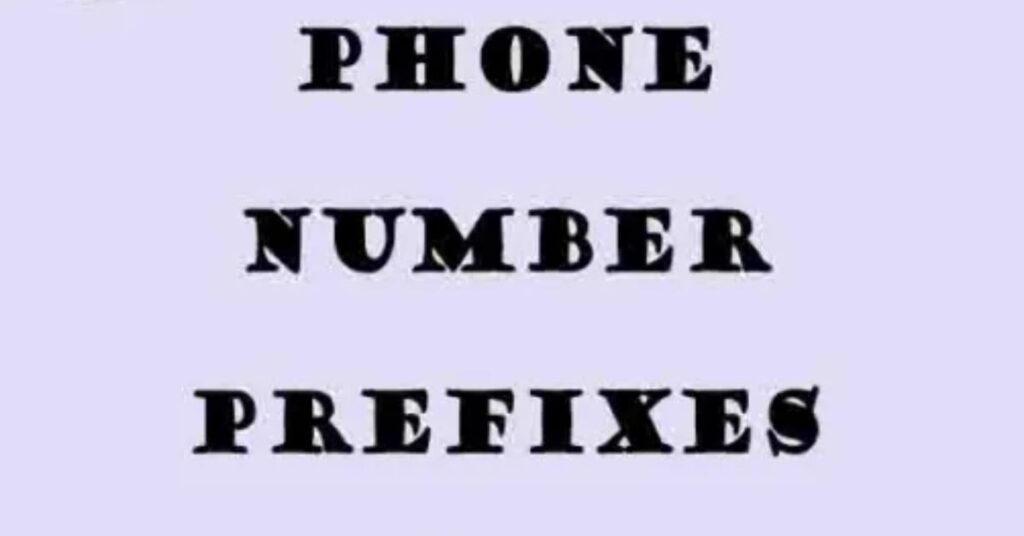Have you ever wondered what makes certain phone prefixes unique? In the world of area codes, the prefix 206 holds particular significance, especially for residents of Washington State. From its origin and coverage to its cultural impact, understanding the 206 prefix reveals more than just a set of numbers. This article explores the origins, regions covered, and the importance of phone prefix 206, giving you insight into why it’s more than just an area code.
The Origin of Phone Prefix 206
Phone prefixes, also known as area codes, play a significant role in organizing telephone numbers in specific geographical regions. The 206 prefix was established in 1947 by AT&T and Bell Labs as one of the first area codes in North America. Originally, 206 covered the entire state of Washington. As population growth surged, the need for more phone numbers increased, and area codes were split to cover smaller regions. Today, the 206 prefix is reserved for the Seattle metropolitan area and a few nearby locales.
The significance of phone prefix 206 has grown alongside Seattle’s prominence. Representing not only the city but also its culture, identity, and economic growth, the 206 prefix is now widely recognized.
What Regions Does the 206 Prefix Cover?
The 206 area code currently serves Seattle and nearby regions, including:
- Seattle: Known as the core city within the 206 area code, Seattle is a major tech and cultural hub.
- Vashon Island: A quieter, more rural area within the 206 region, known for its unique culture and art community.
- Shoreline: This suburb of Seattle lies just north of the city, blending urban and residential areas.
How Area Code Splits Shaped Phone Prefix 206
With growing demand for phone numbers in the late 20th century, the original 206 area code could no longer serve all of Washington State. By the 1990s, Washington required additional area codes due to both population and economic growth. This need for additional prefixes led to multiple splits:
- 360 Area Code (1995): The first split assigned the 360 prefix to areas outside the Seattle metro area, including regions in western Washington.
- 425 Area Code (1997): Rapid population growth in cities like Bellevue and Everett created the need for the 425 prefix, covering the eastern Seattle suburbs.
- 253 Area Code (1997): Cities south of Seattle, including Tacoma, were assigned the 253 prefix.
After these changes, the 206 prefix was confined to Seattle and nearby areas, allowing it to retain its identity within the metropolitan area.
The Cultural Impact of the 206 Prefix
Area codes often carry cultural significance, and 206 is no exception. For Seattle residents, 206 is a part of local pride. It appears in art, on clothing, and even in local business names, symbolizing Seattle’s identity.
The 206 prefix connects directly to Seattle’s tech industry. As the headquarters for major tech companies like Amazon and Microsoft, Seattle’s influence on global tech culture is significant. The 206 area code, associated with Seattle, has therefore become a mark of tech innovation and urban culture.
Technological Shifts and the Changing Role of Phone Prefix 206
Over the decades, advancements in telecommunications have transformed how area codes and prefixes function. With the rise of mobile phones, VoIP, and virtual numbers, the association between a person’s area code and their physical location has weakened. People can now retain their 206 prefix even if they move out of Seattle.
However, the sense of identity connected to the 206 prefix remains strong. Seattle locals often prefer to retain their 206 numbers as a way to stay connected to the city. For residents, keeping a 206 number symbolizes not just a contact but a connection to Seattle’s evolving history and culture.
Phone Prefix 206 in Business and Communication
Seattle’s businesses also leverage the 206 prefix to signal local identity. For companies, a 206 prefix serves as a local marker, enhancing trust with Seattle-area clients. Additionally, as Seattle’s economy continues to thrive, companies use the 206 prefix to strengthen their local presence in a competitive market.
Future Considerations for Phone Prefix 206
With the increasing demand for phone numbers, there may be changes to how area codes are assigned. In many areas, overlays—multiple area codes covering the same geographic region—are implemented to meet demand. While there is currently no overlay in place for the 206 area code, it could be considered if growth continues.
Should an overlay be introduced, new numbers within Seattle might no longer receive a 206 prefix. However, existing numbers would retain it, preserving its cultural and historical significance for long-time Seattle residents.
Conclusion:
Phone prefix 206 isn’t just an area code—it’s an emblem of Seattle’s unique blend of history, technology, and culture. From its early beginnings covering all of Washington to its current status as a Seattle identifier, the 206 prefix connects residents, businesses, and communities. For those within its reach, it remains a proud representation of Seattle’s identity, growth, and community.







